A smart bonsai, a drawing robot and mannequin heartbeats…
Published 20 October 2015 by Quentin Chevrier
More than 20 participants of all levels came together on October 17 for an afternoon of casual coding and tinkering hosted by Makery. Photo highlights below.
Bricole It (subtitled “this is not a hackathon”) is based on a simple premise. It’s an afternoon where anybody can come to tinker, code, prototype just about anything. Makery offers a room, equipment (electronic, DIY, soldering…) and a bunch of unused materials waiting to be revived. People come alone or as a team, with or without a project, beginner or advanced, and jump in. Five hours later, show-and-tell around the table. The doors open to the public, each person presents what they made, everyone has a drink together.
Six weeks later, reboot. That’s it.
Last but not least
This 5th Bricole It was also the last one held at Les Ekluz, because we must move out at the end of November (and we’re still looking for a place to go…). But we don’t intend to stop there and will set up shop again as soon as we find a new venue.
So this was the last, but hardly the least, of our Bricole It adventures. What made this a special edition, in partnership with Adaweek to promote women in technology, was that our participant registration was perfectly gender-balanced. Actual attendance on the day, however, was missing a few of those registered females.
Prototypes of all types and all levels
Maxime made his first steps as a maker by transforming a box of cookies into a mini-golfer. Select the power of the swing, and pow! Honorable mention for the golf club made from a discarded 3D-printed mechanical piece and an old Apple earphone, similar in shape to a golf club.
Louis and Clément focused on developing their Piccolo—a tiny digitally controlled triple-axis machine that, once given a pen, draws rather well, mainly rosettes (in pink to the right of the photo). However they got stuck on how to control the machine with a Playstation controller. Something about sending the packets coming from the controller to the serial port…
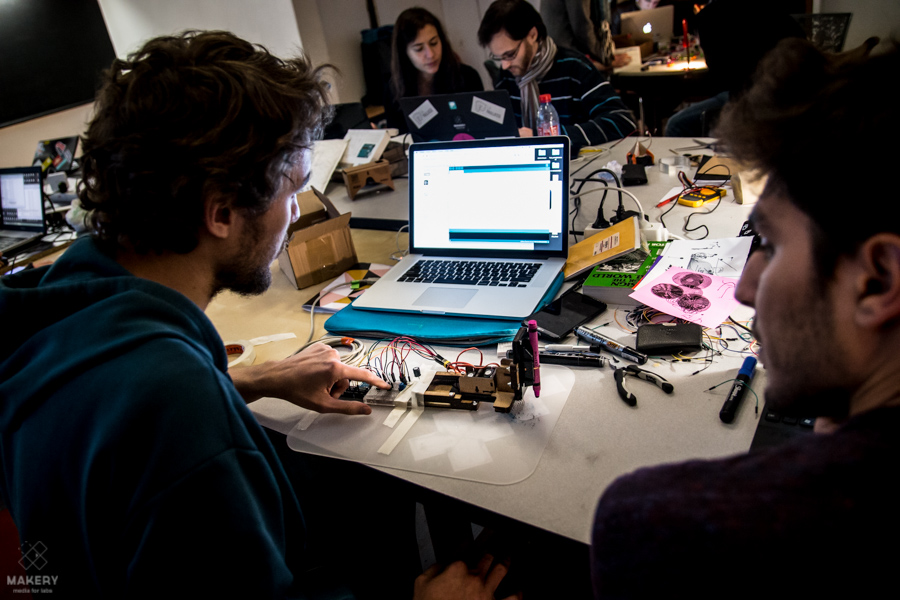
Alice and Clément, coworkers in everyday life, came for their first experience in prototyping. Glued to the Littlebits table all afternoon, they put something together that takes a photo and e-mails it when the environmental sound gets loud. But they got stuck trying to make a perfume bottle send an SMS or e-mail when it gets empty. Next time.
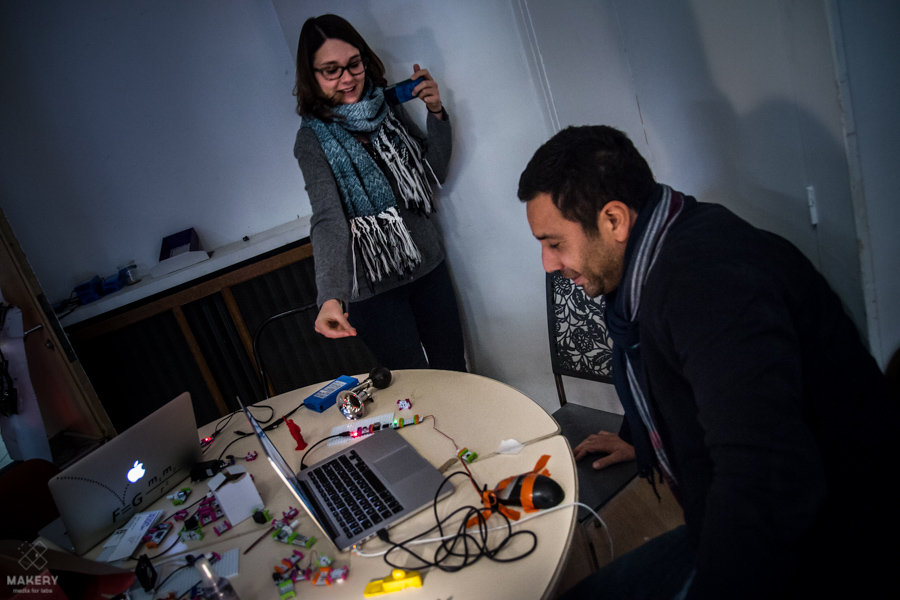
Miguel and Patricia, Brazilian and Colombian, travel often. And their bonsai is dying of loneliness. So they made a digital nanny in the form of a humidity detector that waters the plant when the soil gets dry, using a discarded valve and an Arduino Yun. To make the prototype more visual, they added an RGB LED that lights up either green or red to indicate a problem, embedded in a paper lantern planted in a pink foam tree.
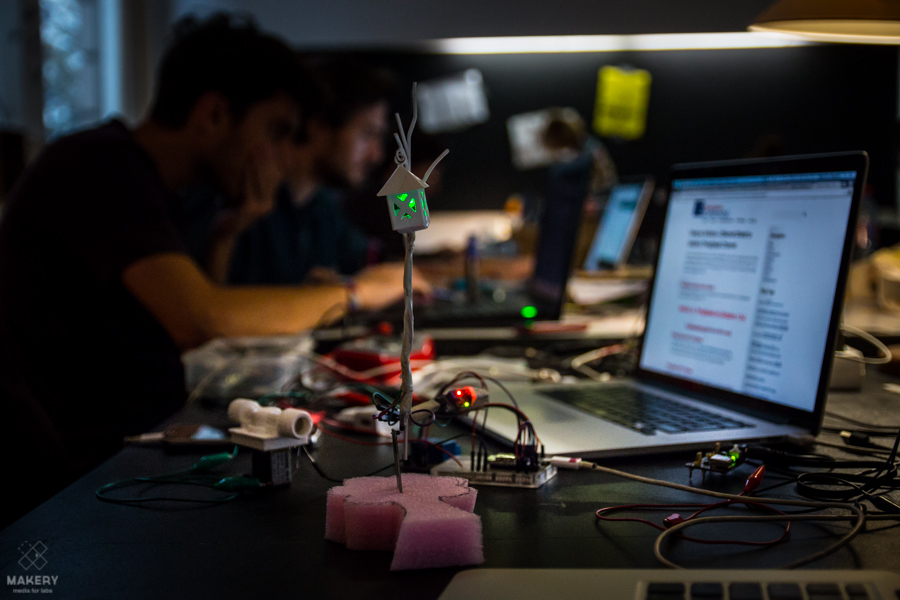
Emmanuel and Irfann developed their box connected to Twitter with artificial intelligence. The goal was to write algorithms that notify the user when something unusual happens in their sphere of interest.
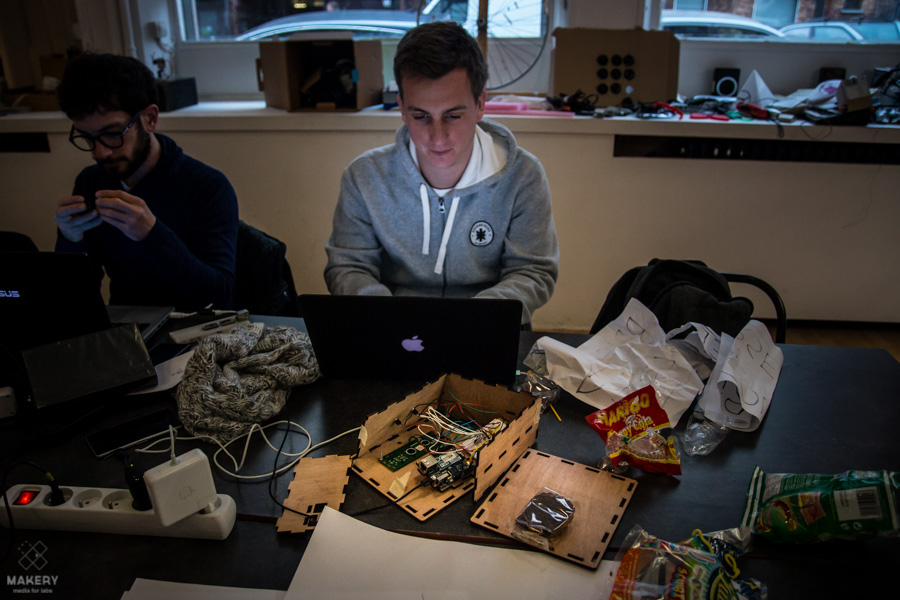
Capucine, a student in interactive design, took advantage of Bricole It to break in her Arduino starter kit. After testing all the sensors and triggers, she ended up prototyping a light indicator, all inside a cardboard box.
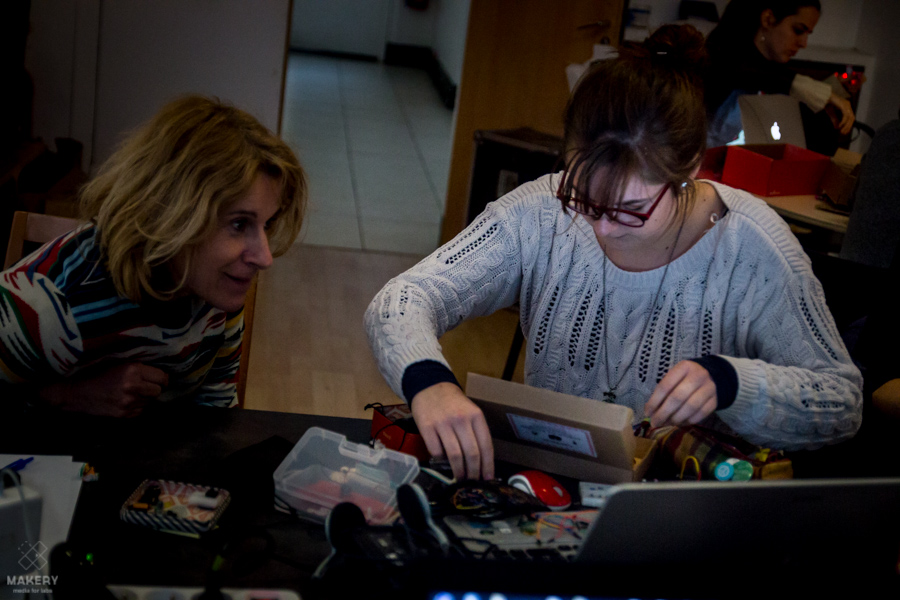
Emilien surprised us by coming with two colleagues. This Saturday, they focused on their open source precision coiler project to allow anyone to make their own microphones. The result was pages full of mathematical formulas and a few lines of code. Between mechanical coiler problems, Emilien tested his new programmable Ethernet card.

Valérie, used to sewing and manipulating matter, is a self-avowed beginner in electronics and coding. After trying to solder balloons, she happened upon a mannequin torso left inside the room. A few Littlebits and lots of VHS tape later, she crafted a moving, blinking breast-plate that mimics human respiration and heartbeat.
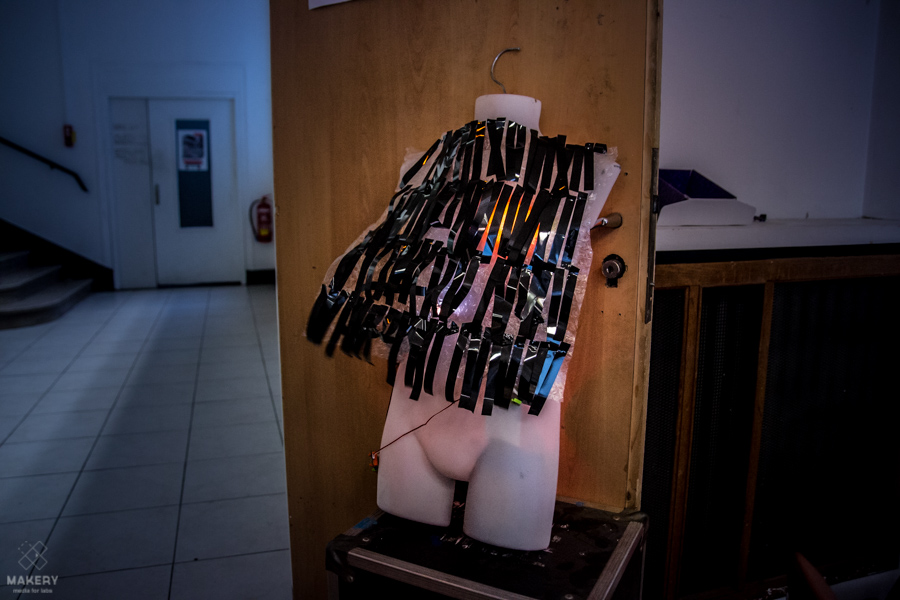
Nicolas, a fan of virtual worlds, tried to link the tangible to the virtual by displaying his presence or absence at home in Second Life by animating LEDs (using the Littlebits wifi module and a few IFTTT recipes).
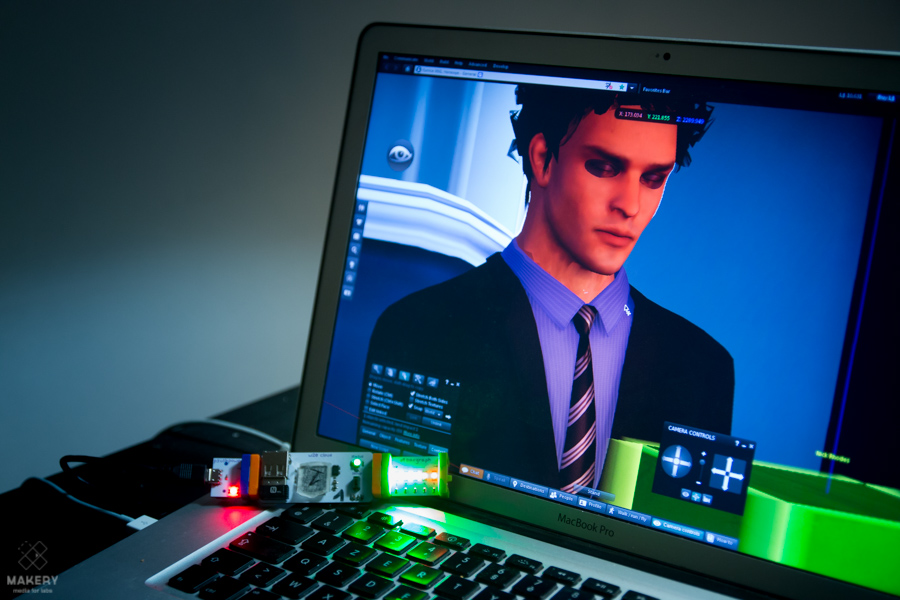
Romain, a Bricole It regular, used Arduino to make a digital magic 8-ball (which, once shaken, gives a random answer yes / no / certainly not / maybe…).
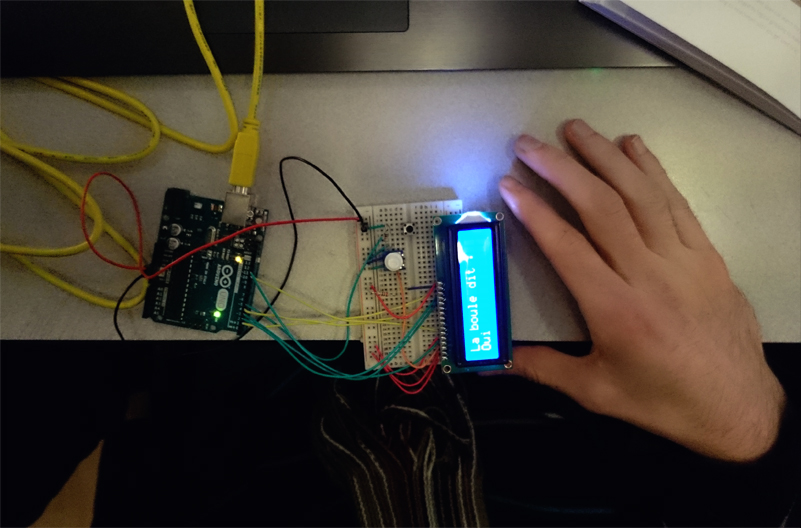
Roselyne went about transcribing a 3D brain scan into a 3D file using a program written in Python. There already exists a tool for this operation, but she wanted more freedom in translating the 3D data from the scan. Eventually, the tool would help her to 3D print a brain embedded with LEDs that reproduce the activity of a brain wired to an Open BCI headset. Heavy stuff.
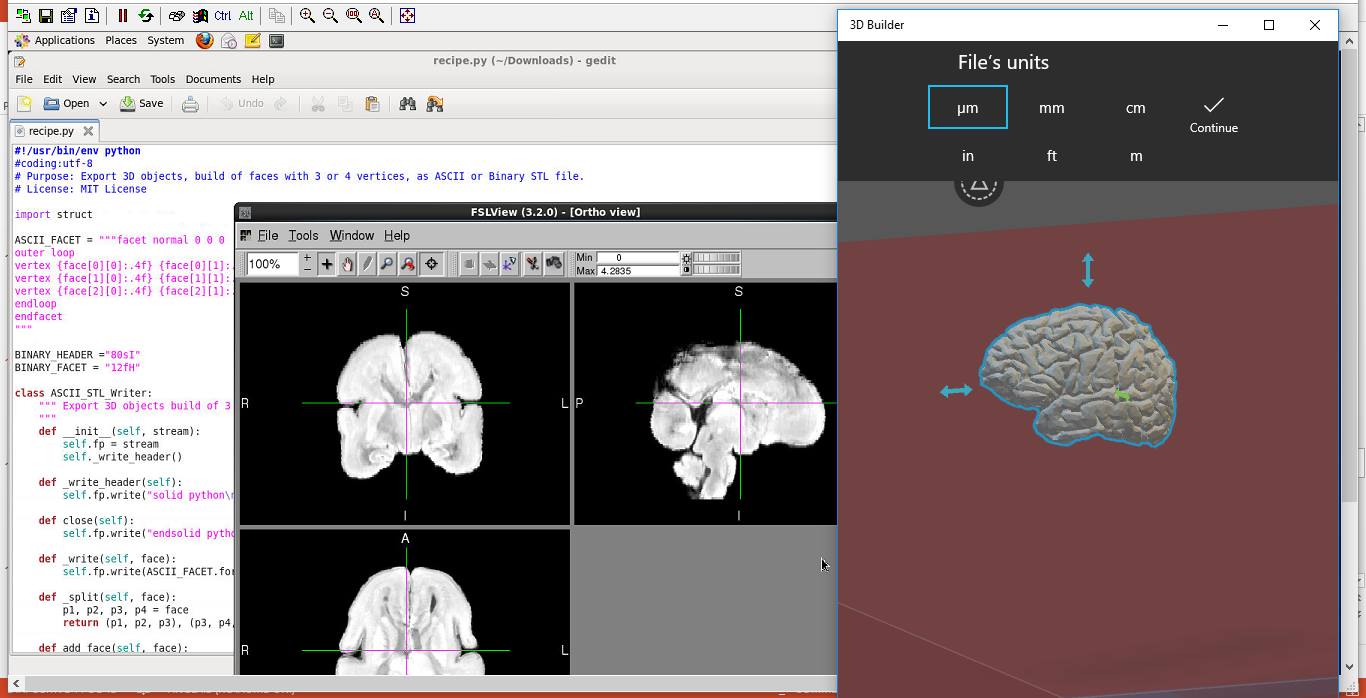
Finally, a few words for Théo and Margaux who, while motivated to augment Théo’s arm brace with LEDs, a bottle opener and a balloon inflated by a fan, didn’t quite find a way to make it work. Next time!
Words and photos: Quentin Chevrier
If you wish to be notified of the date of the next edition, write to quentin @ makery.info
